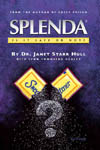
In the 1960s, the sweetener industry changed, but not for the better.
The only artificial sweetener at that time, saccharin, was sacrificed to make room for a new, more profitable sweetener, NutraSweet/Equal® made from aspartame.
Saccharin in Coca Cola®
In 1902, Monsanto Chemical Company launched its reputation by manufacturing saccharin, the company’s very first product. From 1903 through 1905, their entire saccharin output was shipped to the exploding, new soft drink company in Georgia, The Coca-Cola Company®.
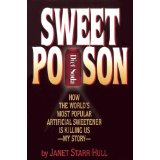
According to Monsanto’s company history, the U.S. government filed suit in 1917 over the safety of saccharin at Monsanto’s request. Monsanto used the suit as a test case for saccharin’s safety, and the suit was dismissed in 1925.
Early on, this gave saccharin much-needed government approval for safety.
Then, curiously in 1969, saccharin was suddenly questioned as a carcinogen — out of the blue. No reputable scientific proof was ever presented. Surprised?
And note: this was the year that GD Searle was first applying for their patent on NutraSweet.
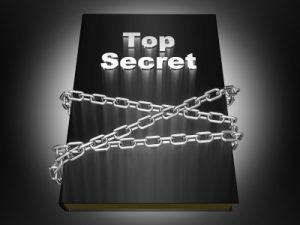
Saccharin Never Caused Cancer
People don’t realize that the 1960s saccharin study was done using a blend of cyclamate and saccharin, and the results actually linked cyclamate—not saccharin—to bladder cancer in rats.
During this study, the researchers fed sweetened water to laboratory mice that was equivalent to 800 cans of saccharin/cyclamate – every day from birth until death.
In this isolated study, one mouse developed bladder cancer, and bingo, the results were submitted to the FDA requesting a cancer warning be placed on all saccharin products.
Remember, this was the year that GD Searle was first applying for their patent on aspartame.
The following year in 1970, cyclamate was banned. No further corporate studies were performed on either cyclamate or saccharin.
Why didn’t saccharin’s Monsanto fight back?
Read on…
The Saccharin Scam
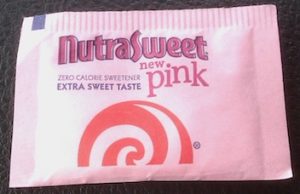
In the 1970s, a few years after the “saccharin/cancer” labeling scam was launched, G.D. Searle & Co. (the original aspartame manufacturer) lost their first FDA patent approval for aspartame; why? The independent research was showing so many lab results of multiple forms of cancer, drops in IQ, and infertility, the FDA pulled the patent.
GD Searle had plans to merge with Monsanto, the original saccharin manufacturer, and the loss of patent approval throw a monkey wench into their plans.
So, they delayed the saccharin cancer warning label until they could push aspartame approval through the FDA.
After 10 more years of effort, NutraSweet and saccharin (its only competitor on the market) were finally owned by the same company—Monsanto Chemical Company.
It was at this time (ten years later in 1982) when the FDA approved aspartame for a second time, and this is when they first printed the cancer warnings on saccharin packets – the year that NutraSweet finally came onto the market.
So, saccharin’s manufacturer didn’t fight back because both saccharin and aspartame were owned and marketed by the same company – Monsanto.
Why did they delay labeling saccharin as a carcinogen? According to my research, they were playing it safe because in the 1970s, neither GD Searle nor Monsanto were confident that this scam would work; I have copies of memos documenting their concerns that aspartame wouldn’t make it through the independent safety studies.
If saccharin remained unlabeled as a carcinogen, they, then, could default back to saccharin if aspartame tanked, even though saccharin wasn’t a big money-maker.
And you will read in my books that at the time of the saccharin cancer study in the 1960s, a deal was made with the FDA to remove the cancer warning in 2000.
All this was pre-planned.
Today
In 2000, Monsanto sold The NutraSweet Company. In 2001, the cancer warning was removed from saccharin products.
Coincidence? I don’t think so.
Remember the deal was made in the 1960s.
Today, saccharin is now deemed safe for human consumption—once again.
After more than one hundred years of use, worldwide, there have only been six complaints against saccharin registered with the FDA. Yet, saccharin has been the most questioned chemical sweetener—the only sweetener labeled as a carcinogen.
It’s all backwards – it is a fact that aspartame has been proven for decades to be a carcinogen. I have these original research studies in Sweet Poison.
It was proven decades ago that aspartame causes breast tumors, leukemia and lymphoma. Read Sweet Poison.
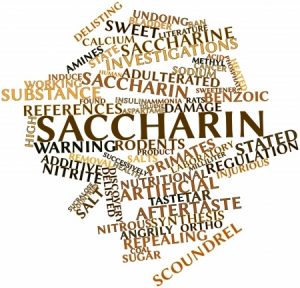 Safe To Use?
Safe To Use?
Extensive research using human populations established no association between saccharin and cancer. In fact, more than thirty human studies were performed before 2001, and all the studies supported saccharin’s safety at average human levels of consumption.
It stands to reason that they needed some sort of justification to remove the labels in 2001, even though they knew this from the beginning.
Cumberland Packing Corp., Brooklyn, New York, manufactured Sweet‘N Low® containing saccharin for over forty years. In 2002, over twenty years after the flawed cancer studies, Cumberland hailed the U.S. Congress for honoring the original moratorium agreement to lift the cancer warning and grant saccharin a clean bill of health.
“We were finally able to remove the cancer warning from all of our products, and that was a big deal,” Cumberland marketing director says. “We went so far as to replace the cancer warning with the Good Housekeeping Seal. We turned unfair negatives into an immediate positive.”
The search for real information concerning the safety of artificial sweeteners is a continuous battle that should have been stopped from the start. But, there is so much money involved in the artificial sweetener industry, after more than 60 years, consumers are still suffering at the hands of these marketing scams.
At least you can use the pink pack with a bit more confidence, especially if you have diabetes or blood sugar issues. If you research the history of the diet sweeteners, and start by reading my books, you’ll be able to make more intelligent, and accurate, decisions about what type of sweeteners you can use for better health.
What’s my advice?
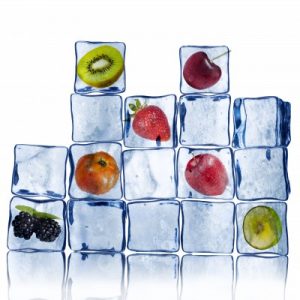
Don’t use any added sweeteners. Eat as raw, natural, and organic as you can, and you’ll discover that you won’t need any extra sweetness.
Need some nutritional help?
If you are consuming the chemical sweeteners, contact me for more information.
The history about saccharin is in my book Splenda®: Is It Safe Or Not? and within the first book ever written about aspartame, Sweet Poison.
I’ve been touting this warning for a very long time.
____________________
You have our permission to reprint this article if you attribute us with a live back-link to this article and credit the recipe links. https://janethull.com/healthynews/
Disclaimer: This article is for informational purposes only, and is educational in nature. The FDA may not have evaluated some of the statements. This article is not intended to diagnose, treat, cure, or prevent any disease. Please discuss with your own, qualified health care provider before adding supplements or making any changes to your dietary program.
Before taking vitamins, consult your doctor; pre-existing medical conditions or medications you are taking can affect how your body responds to multivitamins.